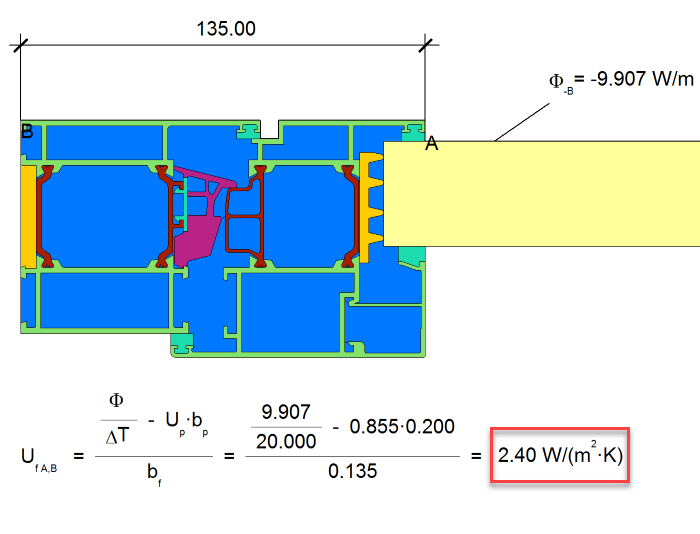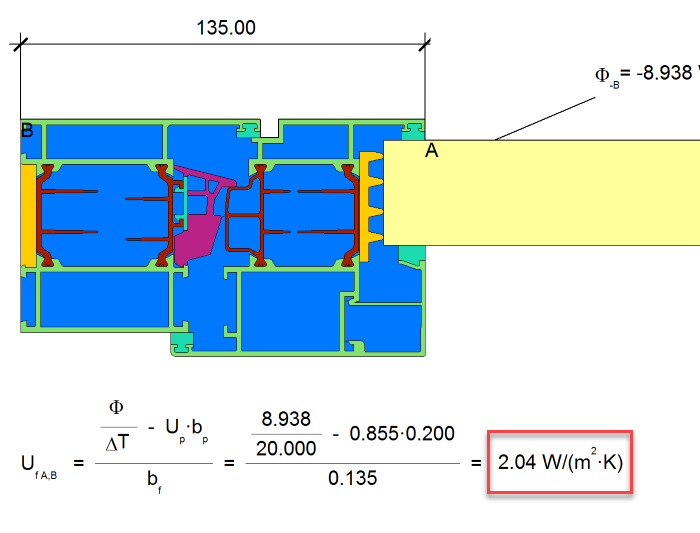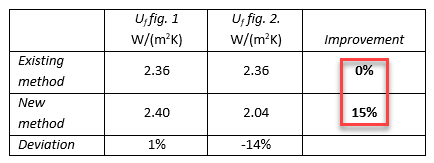Standard EN ISO 10077-2:2017
Introduction of a new calculation approach based on the radiosity method.

Fig. 1: initial situation

Fig. 2: as Fig.1 with additional flags with distances more than 2mm between each other

Tab. 1: comparison old vs. new method
New calculation method
The 2017 revision of the norm 10077-2 introduces a new method for calculating the heat transfer inside air cavities:
- Slightly ventilated air cavities are modeled as boundary conditions (based on temperature and heat transfer resistance).
- The heat transfer by radiation in unventilated air cavities is modeled physically correct (radiosity method).
- The heat transfer by convection/conduction in unventilated air cavities is based on the same algorithms as in the old method, however the medium heat flow direction inside of the air cavity is used instead of the main heat flow direction (horizontal or vertical).
Example
According to the existing method the flags in this example (surface emissivity: 0.9, distance of flags more than 2mm) are not improving the construction. With the new method there is an improvement of 15%, which is realistic.
Calculations
After calculating hundreds of customer examples with both methods, we have concluded the following:
- In general the differences between the two methods are smaller than the tolerance of the standard, especially if there are only few air cavities, the temperature difference inside the air cavities is small or the adjacent surface emissivity is small.
- Often the differences of possible interpretations of the existing method are bigger than the difference between one reference interpretation of the existing method and the new method.
- For air cavities with big differences in temperature, shading, or contorted shapes and normal surface emissivities, the existing method calculates values that are too conservative, and sometimes not plausible.
Conclusion
In day to day use the existing method has some weak points that result from the non-definitive description of the algorithms. This can lead to significant differences in the calculations. On the other hand some effects cannot be simulated with the existing method.
The algorithms of the new method are formulated definitively, without any room for interpretation neither from software manufacturers nor users. The heat transfer by radiation is modeled physically correct.
For comparing the results of different software products and different users, a single, definitively formulated method should be established. Because of the precise modelling of the heat transfer by radiation and the concise formulation, the new method is more appropriate for this purpose.
